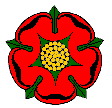 |
Daubhill Methodist, Daubhill |
 |
 | |
From The Bolton Journal and Guardian, Friday, October 23, 1936, reproduced here by the kind permission of the Bolton News.
This year is becoming quite notable for the number of church jubilees and centenaries with which it has been marked. The jubilee of Daubhill Methodist Church falls this month, for on October 21st 1886 opening services were held at the present church, sermons being preached by the Rev. F.L. Wiseman, M.A., and the Rev. Charles Garrett.
Although the present building dates back half a century the ex-Wesleyan Methodist cause in Daubhill takes us back much further to 1858 in fact. Just as Fletcher-st. Methodist Church came into existence to meet the spiritual needs of the increasing population of Bolton moor, so Methodism advanced further up the Moor from Fletcher-st. to the village of Daubhill on the top of the hill, or the “Moor”, as it was known.
In 1858 according to a jubilee handbook published in 1908, Daubhill was a village of a few old houses. A high stone wall ran alongside the road from Cannon-st. to Willows lane, behind which were pleasure gardens. In this wall, about the spot where Gibbon-st. now is, was a gate giving access to a footpath which led to two houses, one of which was occupied by the owner of the gardens. At the Willows-lane end of the wall was a well providing a water-supply for the people of Daubhill, which on early preaching plans, by the way, was printed as two words, Daub Hill.
Rothwell Hall and grounds occupied the site of Sunning Hill Council School and in front ran the single line of the L. and N.W. Railway Co. to Atherton, Daubhill station then being situated in Adelaide-st. Where the present station now stands was a toll bar.
The population of the village would be about 200, and they were a community quite distinct from Bolton.
The first Methodists at Daubhill met for cottage and prayer meetings at the home of Abraham Birchall, 65, St. Helens-rd., the meetings being conducted by members of the society at Fletcher-st. The cause prospered rapidly so that it soon became necessary to find larger accommodation, and it was therefore decided to ask for the use of a day school known as John Tonge’s School at the bottom of Barrier-st., better known as Shed-lane.
Permission to use the school on Sundays and weeknights was granted at a rent of £4 a year, and on the morning of Sunday, August 18th, 1858, the first Wesleyan Sunday School in Daubhill was opened. The early stalwarts had to endure considerable persecution, the services being frequently disturbed by roughs, who threw stones at the door, or climbed up to the windows to mimic the preacher.
The attendances still further increased, particularly in the Sunday School, and so the infant classes were eventually transferred to the boiler-house of a weaving shed owned by Messrs. W. and J. Cooke.
After three years’ steady progress Mr. Thomas Wood Heaton built, in 1861, a little school-chapel for the use of the Methodists on land now occupied by the premises 47, 49, and 51, St. Helens-rd.
Even this new school was soon inadequate, for the number of scholars increased to 200, and so he offered to give them the school to be converted into a chapel if they would build a new school. Thus a school in Stamford-st. was built in 1867 at a cost of £600, and opened in the following year.
In a remarkable way the Methodists continued to make steady progress, and towards the end of the 1870’s land for a new chapel appears to have been bought.
Nothing further was done, however, until 1881 when Messrs. Samuel Horrocks and Joseph Higson were appointed to make arrangements with the architect for a new chapel and school. Plans were submitted to a meeting in 1882, but for financial reasons, definite plans for a new chapel were not accepted until April 1885, when tenders were invited.
Building operations commenced in that year, the memorial-stone being laid on October 10th by Mr. Thomas Walker. The chapel was completed and opened in the following year.
The new building cost about £5,800, the architects being Messrs. Woodhouse and Morley, of Bolton and Bradford. The church is in the Italian style, and it is built of patent red brick – now darkened by the smoke and dirt of half a century of Bolton atmosphere – with stone dressings. It has accommodation for 700 worshippers. Under the chapel is a large schoolroom, from which classrooms open out.
In the early days of the old chapel congregational singing was led by Mr. Aaron Parkinson with his bass fiddle, but in 1896 an organ was built at a cost of £400. It was in an unfinished condition for 13 years, a further 350 being spent after the Jubilee Festival in 1908 to complete it.
For several years after the opening of the new church the infants were accommodated there, but owing to lack of space it was decided to transfer them to the old Stamford-st. school, which was reopened on May 21st, 1893.
In 1929 an improvement and extension scheme was carried through at a cost of £1,250.
| Bolton Home & Contents | ©Lancashire OnLine Parish Clerks | Lancashire Home |